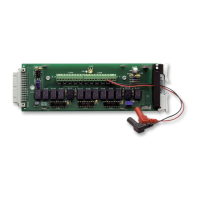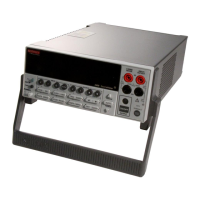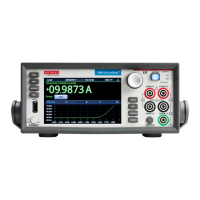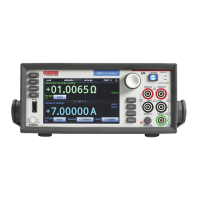2: General operation Model 2450 Interactive SourceMeter® Instrument
2-98 2450-901-01 Rev. B/September 2013
To make a measurement, you set the measurement function and then send the
smu.measure.read() command. For example, to make a current measurement, send the
commands:
smu.measure.func = smu.FUNC_CURRENT
print(smu.measure.read())
To make a voltage measurement, send the commands:
smu.measure.func = smu.FUNC_DC_VOLTAGE
print(smu.measure.read())
To make a resistance measurement, send the commands:
smu.measure.func = smu.FUNC_RESISTANCE
print(smu.measure.read())
For detailed application examples that use the TSP command language, see the User's Manual.
Command descriptions are provided in the TSP command reference (on page 8-1
).
Protection
The Model 2450 provides several methods for ensuring that the source remains within certain values.
This helps to protect the DUT from damage.
The protections that affect the source are the:
• Overvoltage protection. This is the voltage at the instrument terminals.
• Source limits. This is the sourced value at the device.
Overvoltage protection
Overvoltage protection restricts the maximum voltage level that the instrument can source. It is in
effect when either current or voltage is sourced. This protects the device under test (DUT) from high
voltage levels.
For example, if a sense lead is disconnected or broken during a 4-wire sense measurement, the
instrument can interpret the missing sense lead as a decrease in voltage and respond by increasing
the source output. If overvoltage protection is set, the sourced output is not allowed to exceed the
overvoltage protection limit.
The value set for overvoltage protection takes precedence over the source limit settings. When it is
enabled, it is always in effect.
When overvoltage protection is set and the sourced voltage exceeds the setting:
• The output is clamped at the overvoltage protection value
• On the front panel, an indicator to the right of the voltage displays OVP
When overvoltage protection is used in a test sequence, it should be set before turning the source on.
Even with the overvoltage protection set to the lowest value (2 V), never touch anything
connected to the terminals of the Model 2450 when the output is on. Always assume that a
hazardous voltage (greater than 30 V rms) is present when the output is on. To prevent
damage to the DUT or external circuitry, do not set the voltage source to levels that exceed
the value that is set for overvoltage protection.
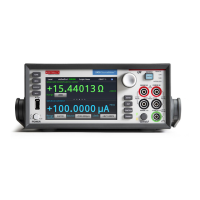
